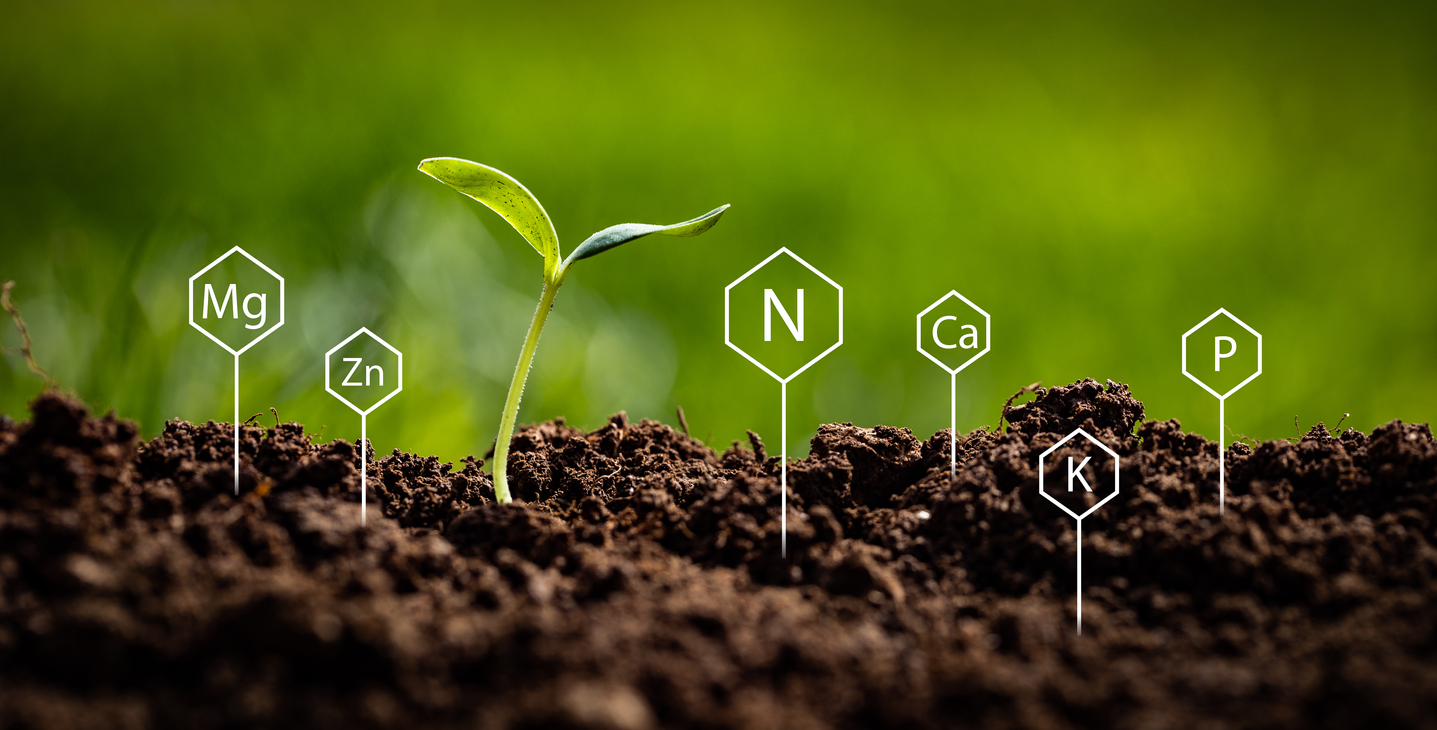Keeping Nitrogen and Phosphorus Available
Keeping soil nitrogen (N) and phosphorus (P) available and on the land is every farmer’s goal. If a farmer is paying for fertilizer, they want the plant to use it. From an environmental standpoint, N and P that leaches or runs off is bad for water quality. Finding ways to tie up N and P and keeping it on the land is good for everyone.
The best way to keep nutrients in the soil is to keep the nutrient available but not soluble. Available nutrients can be used by soil microbes and then transferred to plant roots. Two problems occur with soluble nutrients. First, soluble nutrients flow with water and may either leach or runoff the soil. Second, in dry soils, soluble nutrients are not readily available. Nitrogen in the form of nitrates (NO3 - ) has a negative charge. Soluble reactive phosphorus (SRP) or orthophosphate (PO4 3- ) also has a negative charge as do clay particles. Since negative charges repel each other, these elements tend to be soluble and flow with water. Any organic substance with a positive charge will be attracted to negative charged ions and tend to keep those nutrients on the land.
Most soil nitrogen is quickly converted to nitrates by soil bacteria. The best way to keep N available is to quickly convert N (nitrate or ammonium) to an amino acid through soil microbes. Since a majority of N fertilizer is processed and goes through soil microbes first, maybe farmers should think about fertilizing their microbes rather than their crops. It’s actually more efficient and the plant prefers microbial N. It’s a little like eating fish or meat. Would you like it cooked (processed) or uncooked?
What do soil microbes need to process N? Three things: soluble carbon, sulfur (S), and a little molybdenum. A simple carbon to nitrogen ratio of 30:1 ties up N. Soil microbes also need sulfur in the ratio of 10 parts N to 1 part S (10:1). To build soil organic matter quickly, accumulate and store more carbon by managing N and S. Soil microbes deficient in one nutrient are inefficient at keeping other nutrients in the soil. Assume a soil has 60# N and 60# N added as fertilizer. Soil microbes needs 12# S to stabilize the N, but if the soil has only 8# S, about 40# of soil N as nitrate may leach or runoff. A simple remedy is to apply 4# S to keep the N stabilized. Molybdenum is needed by soil microbes to make an enzyme called nitrate reductase. Nitrogen reductase helps microbes convert nitrates into amino acids which is actually a preferred plant available N source.
In some cases, especially in sandy soils, soil carbon may be deficient. Adding some soluble carbon or a readily available carbon source helps. Most of the time, plant roots spoon feed soluble carbon and sugars to the microbes. When farmers apply fertilizer, it usually comes in one large dose! This can reduce beneficial microbes by creating conditions where pathogens flourish (short term) due to a lack of oxygen. Adding a carbon source helps microbes tie up N before it is lost.
In past articles, humic carbon compounds like fulvic acid (the miracle worker or magician) and humic acid were discussed. Both are good humic carbon compounds but there is one that is even better for tying up nitrates and SRP. Humin is the intermediate between fulvic and humic acid. Humin’s advantage is that it has a high anion exchange capacity which means it has many positive charges to tie up negatively charged soil anions (nitrates, SRP). Both fulvic and humic acid have some positive charges and hold anions (nitrates, SRP) for 10-20 days in an available soil form. Humin can hold these anions for 60-90 days in a microbially and plant available form. Most corn plants have a high demand for N during silking and reproduction (in 60-90 days) so adding humin is a great way to keep both N & P soil and plant available!
There is one problem (of course)! Most humin is manufactured from leonardite (soft brown coal) with potassium hydroxide (KOH) which denatures or renders humin much less effective. Humin is like looking at two freshly painted restored cars, but one was wrecked! Before purchasing humic compound, ask questions about how it is manufactured. Farmers can add humic compounds (including fulvic, humin, and humic acid) at 3% by total weight or volume to liquid fertilizer to improve nutrient retention. Naturally processed humin is the best humic compound at keeping negatively charges anions like nitrates, SRP, sulphates, and molybdenum in plant available forms.
